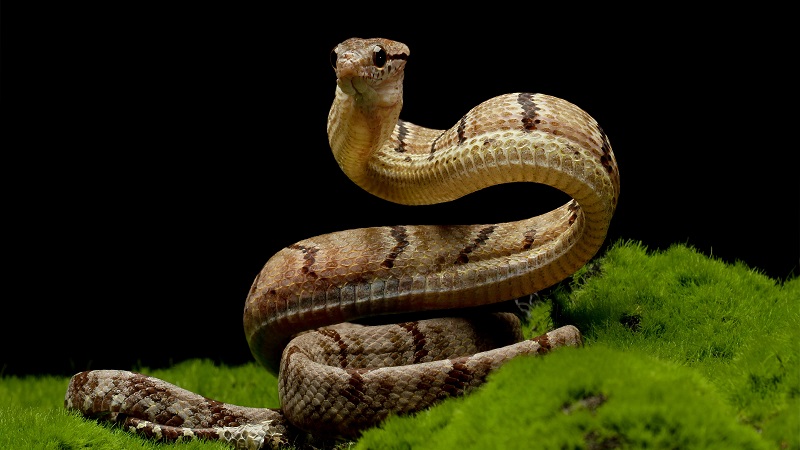Copperhead vs. black rat snake a comparative overview are fascinating creatures that evoke both fear and fascination in humans. Among the various species, the copperhead and the black rat snake are two prominent types that are often encountered in North America. Understanding their differences, habitats, behaviors, and roles in the ecosystem can help demystify these reptiles and promote coexistence.
Copperhead Snake: The Venomous Predator
Identification and Appearance
The copperhead snake (Agkistrodon contortrix) is easily recognized by its distinctive copper-colored head and hourglass-shaped bands on its body. Adults typically measure between 24 to 36 inches in length. Their color ranges from a light tan to a deep reddish-brown, providing excellent camouflage in their natural habitat.
Habitat and Distribution
Copperheads are commonly found in the eastern and central United States. They thrive in a variety of environments, including forests, rocky areas, wetlands, and even suburban areas. They prefer habitats that offer plenty of cover, such as leaf litter and logs, where they can hide from predators and ambush prey.
Behavior and Diet
Copperheads are ambush predators, relying on their camouflage to surprise prey. Their diet primarily consists of small mammals, birds, amphibians, and insects. While they are venomous, their bites are rarely fatal to humans. Copperheads are generally non-aggressive and will bite only if threatened or provoked.
Black Rat Snake: The Constrictor
Identification and Appearance
The black rat snake (Pantherophis obsoletus), also known as the Eastern rat snake, is one of the largest snakes in North America, often exceeding six feet in length. It has a sleek, shiny black appearance with a white or pale-colored underside. Juveniles are gray with black blotches, which gradually darken as they mature.
Habitat and Distribution
Black rat snakes spread widely across the eastern United States. They adapt easily and inhabit forests, fields, farmlands, and even areas near human dwellings. These snakes climb excellently and often perch in trees or rafters of barns and sheds.
Behavior and Diet
Black rat snakes are constrictors, meaning they subdue their prey by coiling around and suffocating it. Their diet includes rodents, birds, eggs, and small mammals. Unlike the venomous copperhead, black rat snakes are non-venomous and pose no threat to humans. They are known for their docile nature and play a crucial role in controlling rodent populations.
Key Differences Between Copperhead and Black Rat Snake
Venom and Bite
One of the most significant differences between the copperhead and the black rat snake is their method of subduing prey. Copperheads use venom to immobilize and pre-digest their prey, whereas black rat snakes use constriction. Copperhead bites can cause significant pain and require medical attention, while black rat snake bites are harmless to humans.
Physical Appearance
Copperheads and black rat snakes are visually distinct. Copperheads have a striking pattern and color that blend with their surroundings, while black rat snakes are uniformly black with a lighter underside. These differences make it easier to identify them in the wild.
Behavior and Temperament
Copperheads are generally more reclusive and will avoid human contact if possible. Black rat snakes, on the other hand, are more likely to be encountered near human habitats due to their adaptability and excellent climbing abilities. Despite their imposing size, black rat snakes are non-aggressive and often act defensively rather than offensively.
Importance in the Ecosystem
Copperhead’s Role
Copperheads help control the populations of small mammals and other prey species, maintaining a balanced ecosystem. Their presence indicates a healthy environment, as they are sensitive to pollution and habitat destruction.
Black Rat Snake’s Role
Black rat snakes are crucial in controlling rodent populations, which can become pests and damage crops or spread disease. By keeping rodent numbers in check, they indirectly support human agricultural activities and reduce the need for chemical pest control.
Coexisting with Copperheads and Black Rat Snakes
Safety Precautions
Understanding and respecting the habitats of these snakes is key to coexisting peacefully. Avoiding areas where copperheads live, wearing boots and long pants while hiking, and being cautious around rocks and logs can prevent unwanted encounters. To keep black rat snakes out, seal homes and barns to stop them from entering living spaces.
Conservation Efforts
Both species face threats from habitat destruction and human persecution. Educating the public about the ecological benefits of these snakes can help reduce fear and encourage conservation efforts. Protecting natural habitats and reducing unnecessary killing of snakes are essential steps in preserving these important species.
Conclusion
Copperhead vs. black rat snake a comparative overview each play vital roles in their ecosystems. By understanding their behaviors, habitats, and contributions, we can appreciate their presence and coexist with them more harmoniously. Through education and conservation, we can ensure that these remarkable reptiles continue to thrive in the wild.
Read More beautydod.
